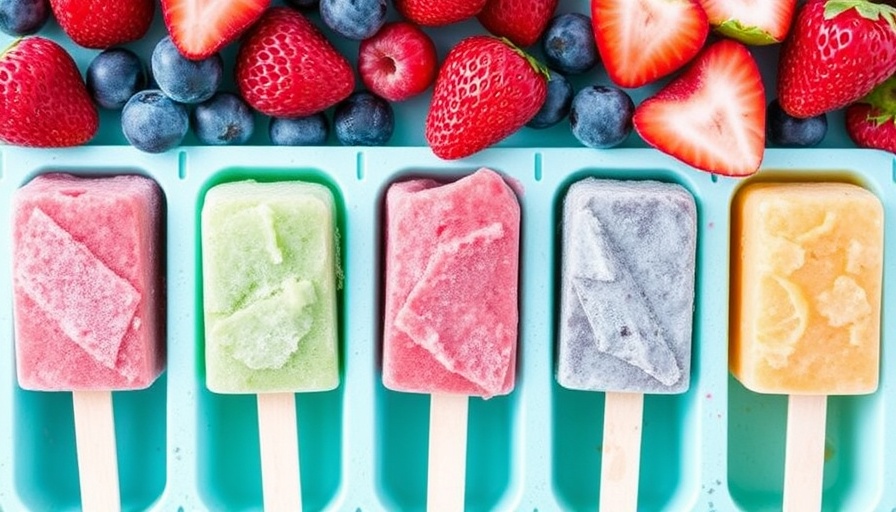
Discover the Versatility of Frozen Fruits
As temperatures rise this summer, refreshing treats become a necessity for combating heat, and frozen fruit stands out as a nutritious option. Not only does it retain the same nutritional value as fresh fruit, but it often contains fewer preservatives, making it ideal for health-conscious families and seniors alike. According to dietitian Joanna Gregg of MyFitnessPal, frozen fruits are frozen at their peak freshness, maintaining their vitamin content and providing endless possibilities for summer snacks and meals.
Fun and Creative Uses for Frozen Fruit
When you think of frozen fruit, smoothies might come to mind first, but there are many innovative and enjoyable ways to incorporate this versatile ingredient into your summer routine. Here are six popular strategies to enjoy frozen fruit:
1. DIY Popsicles
Popsicles are not just for kids—they're a fun way for anyone to enjoy a cool treat. Simply blend your choice of fruits with yogurt or juice, pour the mixture into molds or even paper cups, and freeze. This serves as a delicious way to make use of any leftover fresh fruit too.
2. Infused Water
Jazz up your hydration game by adding frozen fruit to your water bottle. As it melts, the fruit releases flavor without the added sugars found in many sports drinks. Chopped strawberries or blueberries can provide a refreshing burst of taste on those scorching summer days.
3. Add to Breakfast
Frozen fruits can elevate a simple breakfast. Toss them onto oatmeal, pancakes, or yogurt. They provide not just flavor, but also an appealing texture. Plus, the fruit cools your meal, making it perfect for warm mornings.
4. Fruit Salad Marvel
Mix thawed frozen fruit into a vibrant fruit salad for a delightful snack or side dish. The colors are appealing, and the flavor combinations can surprise your palate, particularly with berries, mangoes, and peaches.
5. Dessert Toppings
Frozen fruits work beautifully as toppings for desserts. Whether on ice cream, cakes, or pastries, they enhance the flavor and presentation. A scoop of vanilla ice cream topped with a mix of thawed frozen berries offers a simple yet extra special tasty treat.
6. Smoothie Bowl Boost
Instead of just blending fruit into smoothies, turn it into a smoothie bowl. Use your favorite frozen fruits as a base, then add toppings like granola, nuts, or seeds. This creates a fun, visually appealing breakfast option that kids will love.
Why Frozen Fruit is a Game Changer
The growing popularity of frozen fruit can be attributed to its convenience and longer shelf life. By maintaining the nutrients often diminished in some fresh produce, frozen fruit is a solution for busy families and solo households. Knowing how to creatively use frozen fruit can transform your summer diet, making it easier to incorporate healthier options.
Take Action for a Healthier Summer
Embrace the versatility of frozen fruit this summer! Get creative with your meals and snacks by incorporating these fun ideas. Not only will you enjoy deliciously refreshing treats, but you'll also benefit your overall health by consuming more fruits effortlessly.
 Add Row
Add Row  Add
Add 




Write A Comment